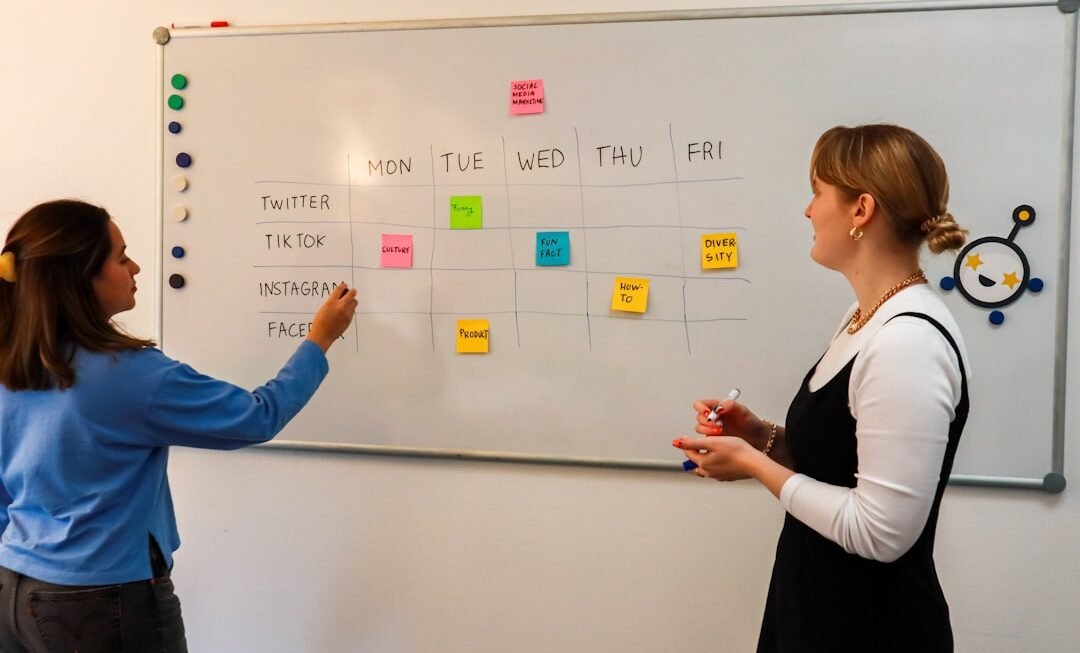Immersive learning represents a transformative approach to education, leveraging advanced technologies to create engaging and interactive environments that enhance the learning experience. This method transcends traditional educational paradigms by placing learners in simulated environments where they can actively participate in their learning journey. Immersive learning encompasses various technologies, including virtual reality (VR), augmented reality (AR), and mixed reality (MR), all of which aim to create a sense of presence and engagement that is often lacking in conventional classroom settings.
By immersing students in realistic scenarios, educators can foster deeper understanding and retention of knowledge. The rise of immersive learning is closely tied to advancements in technology, particularly in the fields of VR and AR. These technologies have evolved significantly over the past decade, becoming more accessible and affordable for educational institutions.
As a result, educators are increasingly exploring how these tools can be integrated into curricula to enhance student engagement and learning outcomes. Immersive learning not only captivates students’ attention but also encourages collaboration, critical thinking, and problem-solving skills, making it a valuable addition to modern education.
Key Takeaways
- Immersive learning involves the use of virtual reality (VR) and augmented reality (AR) to create engaging and interactive educational experiences.
- VR creates a completely immersive environment, while AR overlays digital information onto the real world, both offering unique learning opportunities.
- Immersive learning experiences can improve student engagement, motivation, and knowledge retention, leading to better learning outcomes.
- VR and AR can enhance comprehension by providing visual and interactive representations of complex concepts, making learning more accessible and understandable.
- Immersive learning can improve retention by creating memorable and impactful experiences that are more likely to be remembered and applied in the future.
Understanding Virtual Reality (VR) and Augmented Reality (AR)
Virtual reality (VR) is a fully immersive experience that transports users into a computer-generated environment, allowing them to interact with 3D objects and scenarios as if they were real. Users typically wear VR headsets that block out the physical world, creating a sense of presence within the virtual space. This technology is particularly effective for simulations, training exercises, and educational experiences that require a high level of engagement.
For instance, medical students can practice surgical procedures in a risk-free environment, gaining hands-on experience without the consequences associated with real-life operations. In contrast, augmented reality (AR) overlays digital information onto the real world, enhancing the user’s perception of their environment without completely replacing it. AR applications often utilize smartphones or tablets to display additional content, such as 3D models or interactive elements, that users can manipulate while still being aware of their surroundings.
This technology is particularly useful in fields like architecture and engineering, where students can visualize complex structures in real-time. For example, an architecture student might use AR to project a 3D model of a building onto a physical site, allowing them to assess its design in context.
Benefits of Immersive Learning Experiences
The benefits of immersive learning experiences are manifold, significantly impacting student engagement and motivation. One of the most notable advantages is the ability to create experiential learning opportunities that traditional methods cannot replicate. By immersing students in realistic scenarios, they can apply theoretical knowledge in practical contexts, leading to a deeper understanding of the subject matter.
This hands-on approach not only makes learning more enjoyable but also helps students develop critical skills that are essential for their future careers. Moreover, immersive learning fosters collaboration among students. Many VR and AR applications are designed for group interactions, encouraging teamwork and communication as learners navigate challenges together.
This collaborative aspect mirrors real-world situations where individuals must work together to solve problems or complete tasks. As students engage with one another in these immersive environments, they develop social skills and learn to appreciate diverse perspectives, which are crucial for success in today’s interconnected world.
Enhancing Comprehension through VR and AR
The integration of VR and AR into educational settings has been shown to enhance comprehension significantly. When students are placed in immersive environments, they can visualize complex concepts that may be difficult to grasp through traditional teaching methods. For instance, in science education, students can explore the human body in 3D using VR applications that allow them to examine organs and systems from various angles.
This interactive exploration helps demystify intricate biological processes, making them more accessible and understandable. Additionally, immersive learning experiences cater to various learning styles, accommodating visual, auditory, and kinesthetic learners alike. For example, while visual learners benefit from seeing 3D representations of abstract concepts, auditory learners can engage with accompanying audio explanations or discussions within the virtual environment.
Kinesthetic learners thrive on hands-on activities that allow them to manipulate objects and experiment with different scenarios. By addressing these diverse learning preferences, VR and AR create inclusive educational experiences that promote comprehension across the board.
Improving Retention with Immersive Learning
Retention of information is a critical aspect of effective education, and immersive learning has been shown to improve memory recall significantly. The immersive nature of VR and AR experiences creates strong emotional connections to the material being learned. When students actively participate in their education rather than passively receiving information, they are more likely to remember what they have learned.
For instance, a history student who experiences a virtual reenactment of a historical event is likely to retain details about that event far better than if they had simply read about it in a textbook. Research supports the notion that immersive learning enhances retention rates. Studies have indicated that learners who engage with content through VR or AR retain information longer than those who rely on traditional methods.
This phenomenon can be attributed to several factors, including increased engagement levels, the ability to practice skills in realistic scenarios, and the opportunity for immediate feedback within the immersive environment. As educators seek ways to improve student outcomes, leveraging these technologies presents a promising avenue for enhancing retention.
Examples of Successful Immersive Learning Programs
Numerous educational institutions have successfully implemented immersive learning programs that showcase the potential of VR and AR technologies. One notable example is the use of VR simulations in medical training at institutions like Stanford University School of Medicine. Here, students can practice surgical techniques in a controlled environment where they receive real-time feedback on their performance.
This approach not only enhances their technical skills but also builds confidence before they enter actual operating rooms. Another compelling case is the use of AR in K-12 education through platforms like Merge Cube. This innovative tool allows students to hold a physical cube that interacts with AR applications on their devices, bringing subjects like science and history to life.
For instance, when studying the solar system, students can visualize planets rotating around the sun or explore the anatomy of a human heart by manipulating 3D models projected onto the cube. Such interactive experiences captivate young learners’ imaginations while reinforcing key concepts.
Overcoming Challenges in Implementing VR and AR in Education
Despite the numerous advantages of immersive learning technologies, several challenges must be addressed for successful implementation in educational settings. One significant hurdle is the cost associated with acquiring VR and AR equipment and software. While prices have decreased over time, many schools still face budget constraints that limit their ability to invest in these technologies.
To overcome this barrier, educational institutions can explore partnerships with technology companies or seek grants specifically aimed at enhancing STEM education through innovative tools. Another challenge lies in the need for teacher training and professional development. Educators must be equipped with the skills necessary to effectively integrate VR and AR into their teaching practices.
This requires ongoing support and resources to ensure that teachers feel confident using these technologies in their classrooms. Professional development programs should focus not only on technical skills but also on pedagogical strategies that maximize the impact of immersive learning experiences on student outcomes.
The Future of Immersive Learning
The future of immersive learning appears promising as technology continues to advance at an unprecedented pace. Innovations such as haptic feedback devices and artificial intelligence are poised to further enhance the immersive experience by providing more realistic interactions within virtual environments. For instance, haptic gloves could allow users to feel textures or resistance when manipulating virtual objects, creating an even more engaging learning experience.
Moreover, as VR and AR technologies become more mainstream, we can expect increased collaboration between educational institutions and tech companies. This partnership could lead to the development of tailored educational content that aligns with specific curricula and learning objectives. Additionally, as more educators embrace these technologies, we may see a shift towards hybrid learning models that combine traditional teaching methods with immersive experiences, providing students with a well-rounded education that prepares them for future challenges.
Best Practices for Creating Effective Immersive Learning Experiences
To maximize the effectiveness of immersive learning experiences, educators should adhere to several best practices when designing their programs. First and foremost, it is essential to align immersive activities with clear learning objectives. Educators should identify specific skills or knowledge areas they wish to address through immersive experiences and ensure that these goals are integrated into the design process.
Furthermore, incorporating opportunities for reflection is crucial for deepening understanding and retention. After engaging with immersive content, students should be encouraged to discuss their experiences and share insights with peers or instructors. This reflective practice not only reinforces learning but also fosters critical thinking as students analyze their experiences within the context of broader concepts.
Ethical Considerations in Immersive Learning
As with any emerging technology in education, ethical considerations must be taken into account when implementing immersive learning experiences. One primary concern is data privacy; many VR and AR applications collect user data for analytics purposes or personalized experiences. Educational institutions must ensure that they comply with regulations regarding data protection while being transparent with students about how their information will be used.
Additionally, there is a need for inclusivity in immersive learning design. Developers should consider diverse learner needs when creating content to ensure accessibility for all students, including those with disabilities or varying levels of technological proficiency. By prioritizing inclusivity and ethical practices in immersive learning initiatives, educators can create environments where all students have equal opportunities to thrive.
The Impact of VR and AR on Education
The integration of virtual reality and augmented reality into educational settings has the potential to revolutionize how we teach and learn. By creating immersive experiences that engage students on multiple levels—cognitively, emotionally, and socially—these technologies foster deeper understanding and retention of knowledge while preparing learners for real-world challenges. As educators continue to explore innovative ways to incorporate VR and AR into their curricula, it is essential to address challenges related to cost, training, and ethical considerations.
Ultimately, the impact of immersive learning extends beyond individual classrooms; it has the power to reshape educational landscapes by promoting collaboration among educators, technologists, and policymakers alike. As we look toward the future of education, embracing immersive learning technologies will be crucial for equipping students with the skills they need to navigate an increasingly complex world.












